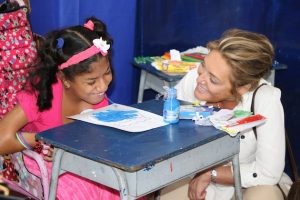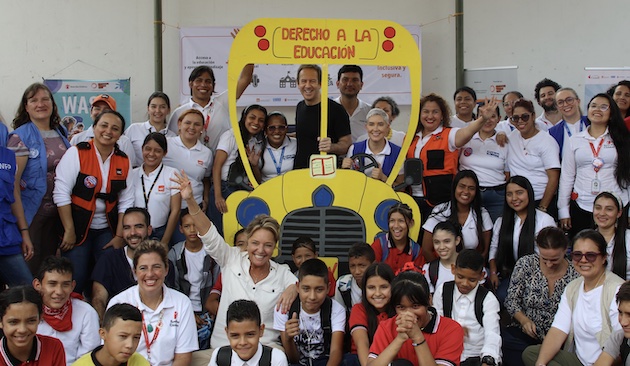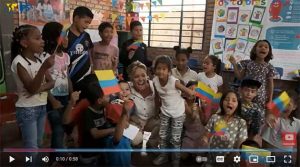Abu Dhabi, April 24, 2023 (GLOBE NEWSWIRE) — Insilico Medicine ("Insilico"), a clinical–stage generative artificial intelligence (AI)–driven drug discovery company which operates the largest AI–powered biotech R&D center in the Middle East, announced that it has successfully discovered a potent, selective, and orally bioavailable small molecule inhibitor of CDK8 for the treatment of cancer using a structure–based generative chemistry approach enabled by the Chemistry42 generative reinforcement learning platform. The research was published in the American Chemical Society's Journal of Medicinal Chemistry, a leading journal in medicinal chemistry.
As members of the CDK family, CDK8 and its paralog protein CDK19 play critical roles in regulating transcription of many different signaling pathways involved in oncogenic control. Deregulation of CDK8/19 has been implicated as a driving force in many human cancers, particularly in acute myeloid leukemia (AML) and advanced solid tumors. Moreover, CDK8/19 is also involved in immune modulation. Targeting CDK8/19 could enhance NK cell cytotoxicity and stimulate NK cell–mediated tumor surveillance. Therefore, targeting CDK8/19 is regarded as a promising strategy with a two–in–one mechanism of action that not only inhibits tumor cell growth, but also increases immune cell activity.
The research published by Insilico was supported by its generative chemistry engine, Chemistry42, which is built on years of modeling and pre–training of large biological, chemical and textual datasets. Chemistry42 includes 42 generative engines and more than 500 predictive engines for scoring which allows researchers to generate molecules with desired properties from scratch using deep learning technologies through structure–based drug design (SBDD) and ligand–based drug design (LBDD).
In this study, scientists described the process of using the SBDD module of Chemistry42 to generate a key anchor linker and identify the hit compound targeting CDK8. Over several optimization cycles, R&D scientists further improved in vitro metabolic stability, kinase selectivity, and in vivo pharmacokinetic profile cross–species, leading to the discovery of one potent, selective, and orally bioavailable inhibitor of CDK8, which was evaluated in in vivo efficacy studies and demonstrated robust tumor growth inhibition in multiple in vivo efficacy models.
In addition to the published molecule, Insilico scientists are progressing with another AI–generated CDK8 inhibitor with a novel structure. Insilico is open to potential partnerships with pharmaceutical companies to co–develop the drug candidate.
"At Insilico, we encourage scientists to share their innovative insights in AI–driven drug discovery with the industry by publishing peer–reviewed papers," said Feng Ren, PhD, Co–CEO and Chief Scientific Officer of Insilico Medicine. "In this case, we have not only discovered a novel compound for a promising target, but also provided innovative practices in early drug discovery supported by generative AI."
Insilico has pioneered applying multiple generative approaches for drug design in both generative chemistry and generative biology and published the first paper in generative chemistry. The company then submitted the relevant patents on applying these generative approaches for chemistry and biology, and integrated these approaches into the commercially available Pharma.AI platform, which includes PandaOmics a system utilizing multiple predictive and generative biology models; a generative chemistry engine, Chemistry42; and a clinical trial outcomes prediction engine InClinico, which utilizes a combination of omics–based predictors and text–based transformers. Powered by generative AI, Insilico is delivering breakthroughs for healthcare in multiple disease areas. The lead program targeting fibrosis–driven diseases has completed Phase 0 and Phase I clinical trials and received positive Phase I topline data and Orphan Drug Designation.
"We described the concept of using generative AI for the design of novel molecules in a peer–reviewed journal in 2016 for the first time. Later, we developed multiple approaches and new features for our GAN–based AI platform for drug design. We also started patenting our findings so that ,in some areas, patents preceded publications. Some of my favorite patents combine generative chemistry and generative biology," said Alex Zhavoronkov, PhD, Founder and CEO of Insilico Medicine. "I am excited to see that with the support of generative AI, we have achieved several industry milestones and advanced the drug candidates discovered by generative AI to the clinical stage. In 2022 alone, we nominated 9 preclinical candidates utilizing generative AI. We are committed to refining our approach and tools to reshape the future of healthcare by generative innovation."
About Insilico Medicine
Insilico Medicine, a clinical–stage generative artificial intelligence (AI)–driven drug discovery company, is connecting biology, chemistry, and clinical trials analysis using next–generation AI systems. The company has developed AI platforms that utilize deep generative models, reinforcement learning, transformers, and other modern machine learning techniques for novel target discovery and the generation of novel molecular structures with desired properties. Insilico Medicine is developing breakthrough solutions to discover and develop innovative drugs for cancer, fibrosis, immunity, central nervous system diseases, infectious diseases, autoimmune diseases, and aging–related diseases. In early 2023, the Company opened the Insilico Medicine Generative Artificial Intelligence and Quantum Computing Research and Development Centre in Abu Dhabi, the region's largest AI–powered biotechnology research center. The R&D hub brings together global talent in artificial intelligence and software development to expand the capabilities of Insilico's end–to–end AI–driven drug discovery platform, Pharma.AI, explore aging research and sustainable chemistry, and support the digital transformation of healthcare in the region. www.insilico.com
Attachment

GLOBENEWSWIRE (Distribution ID 8824301)







